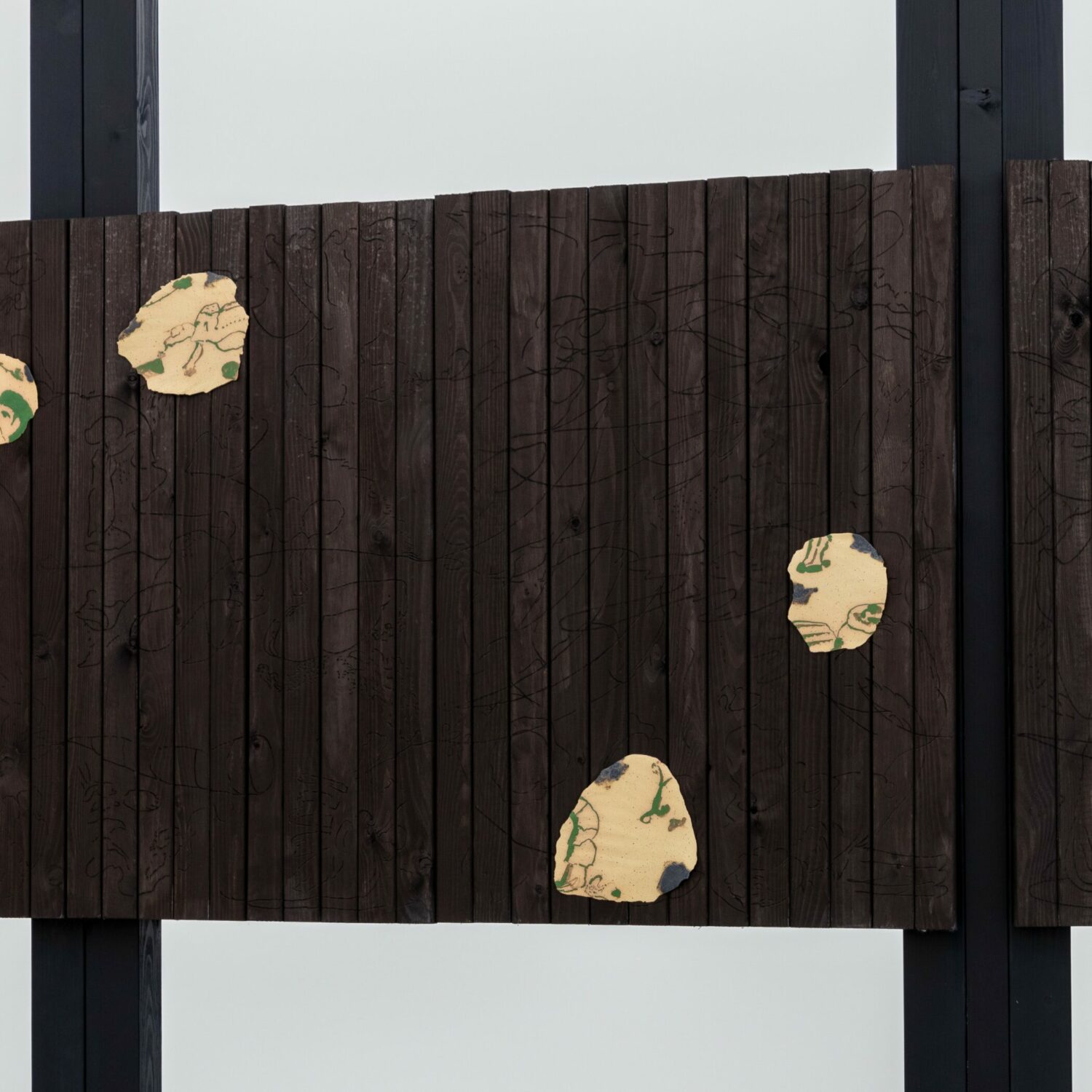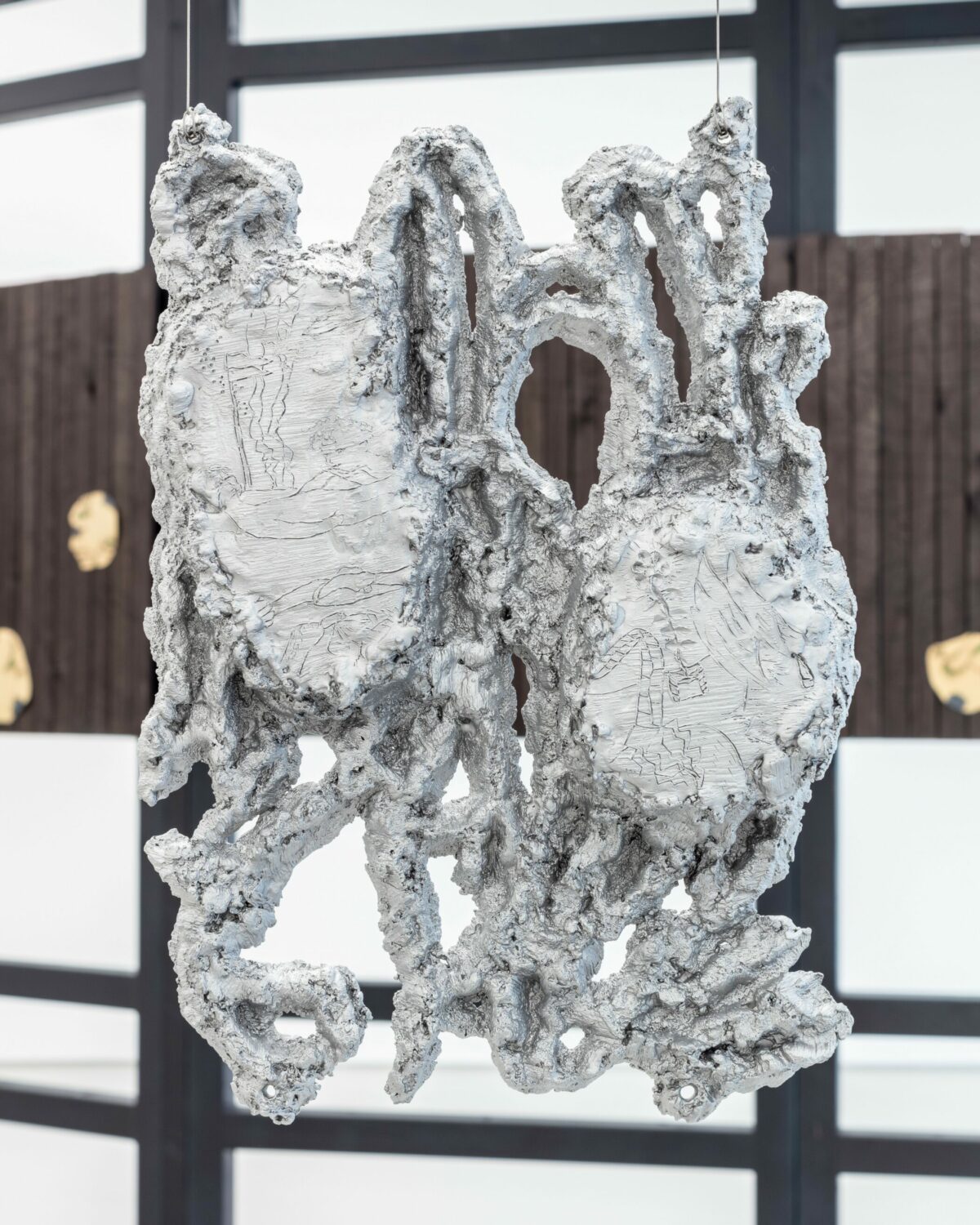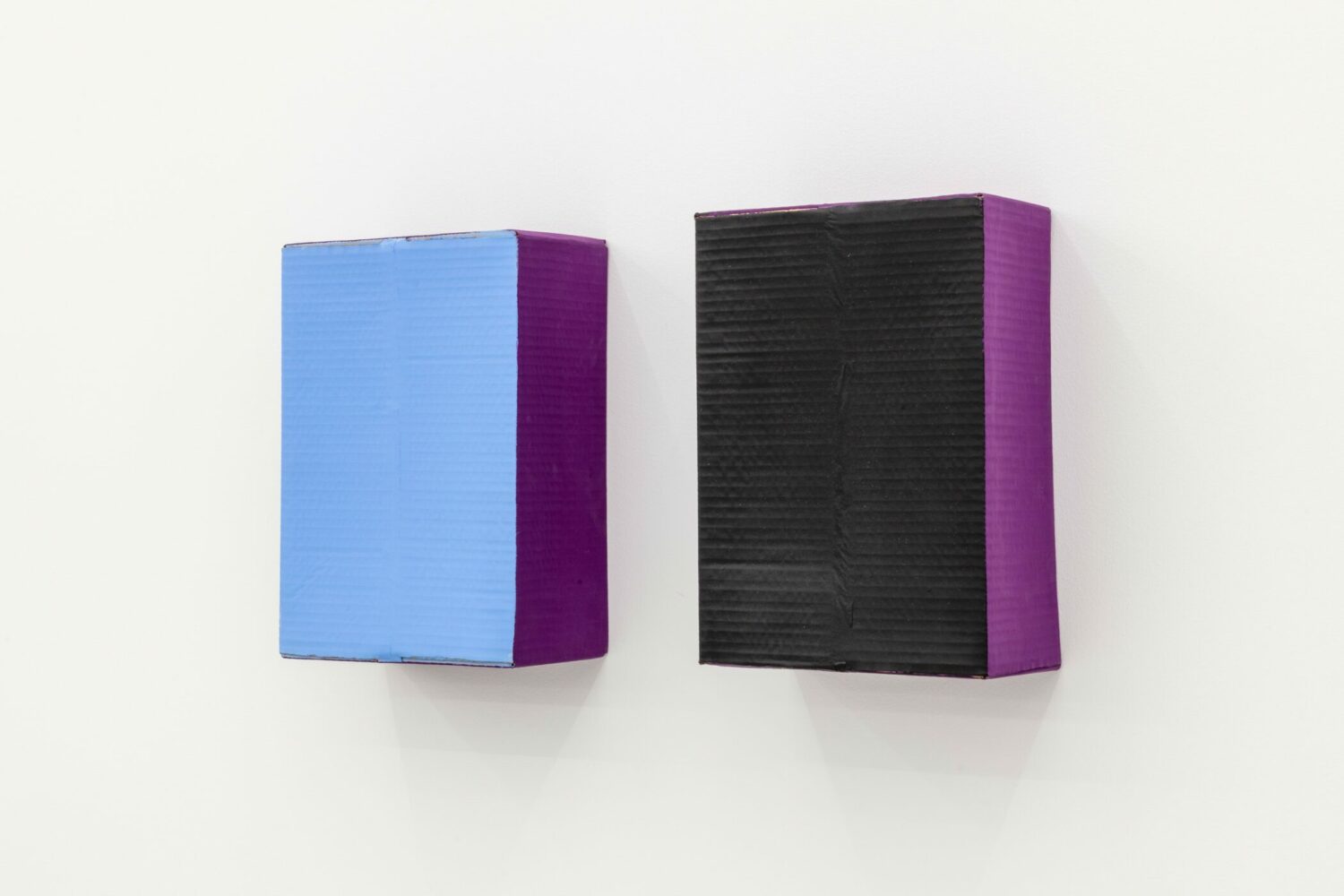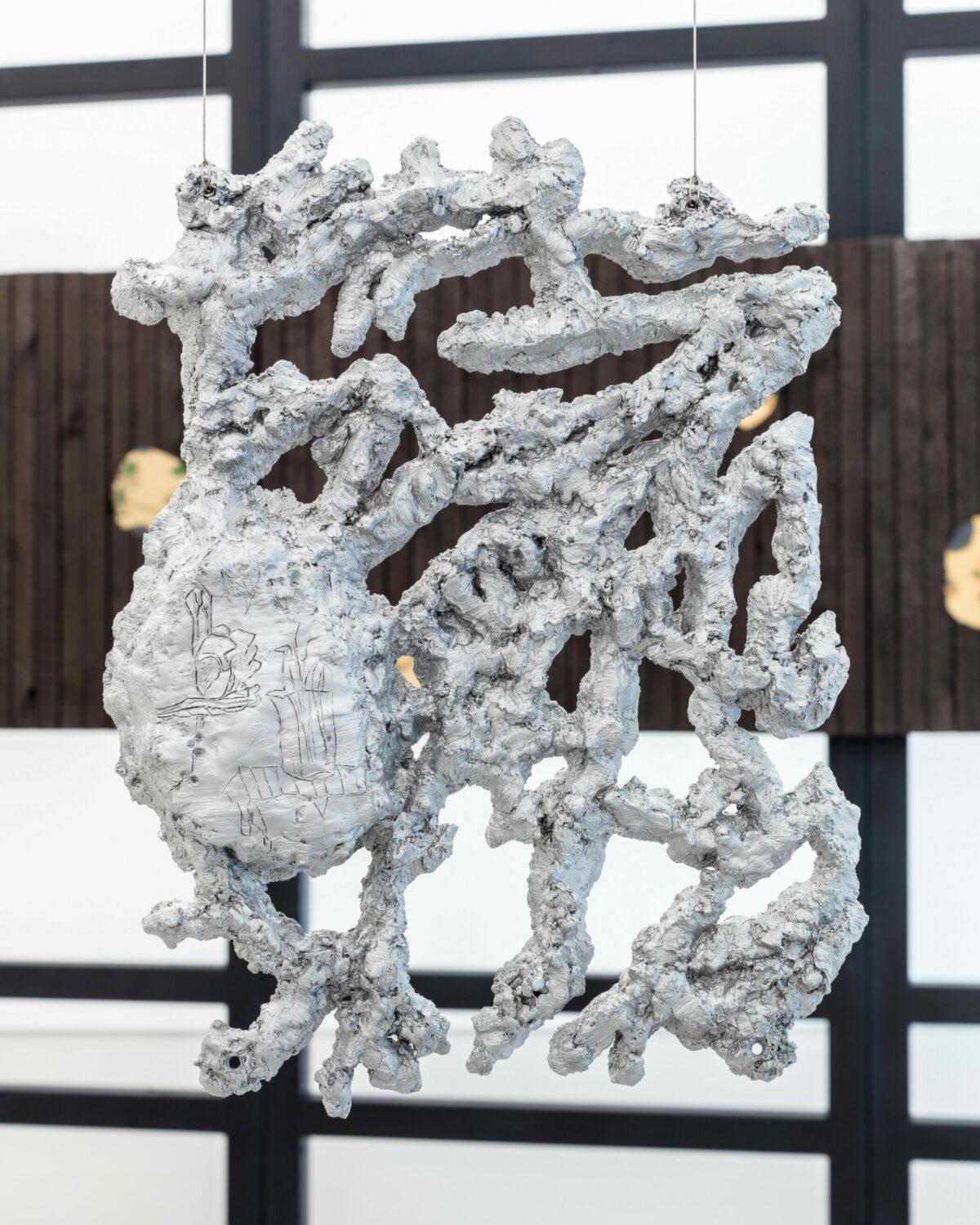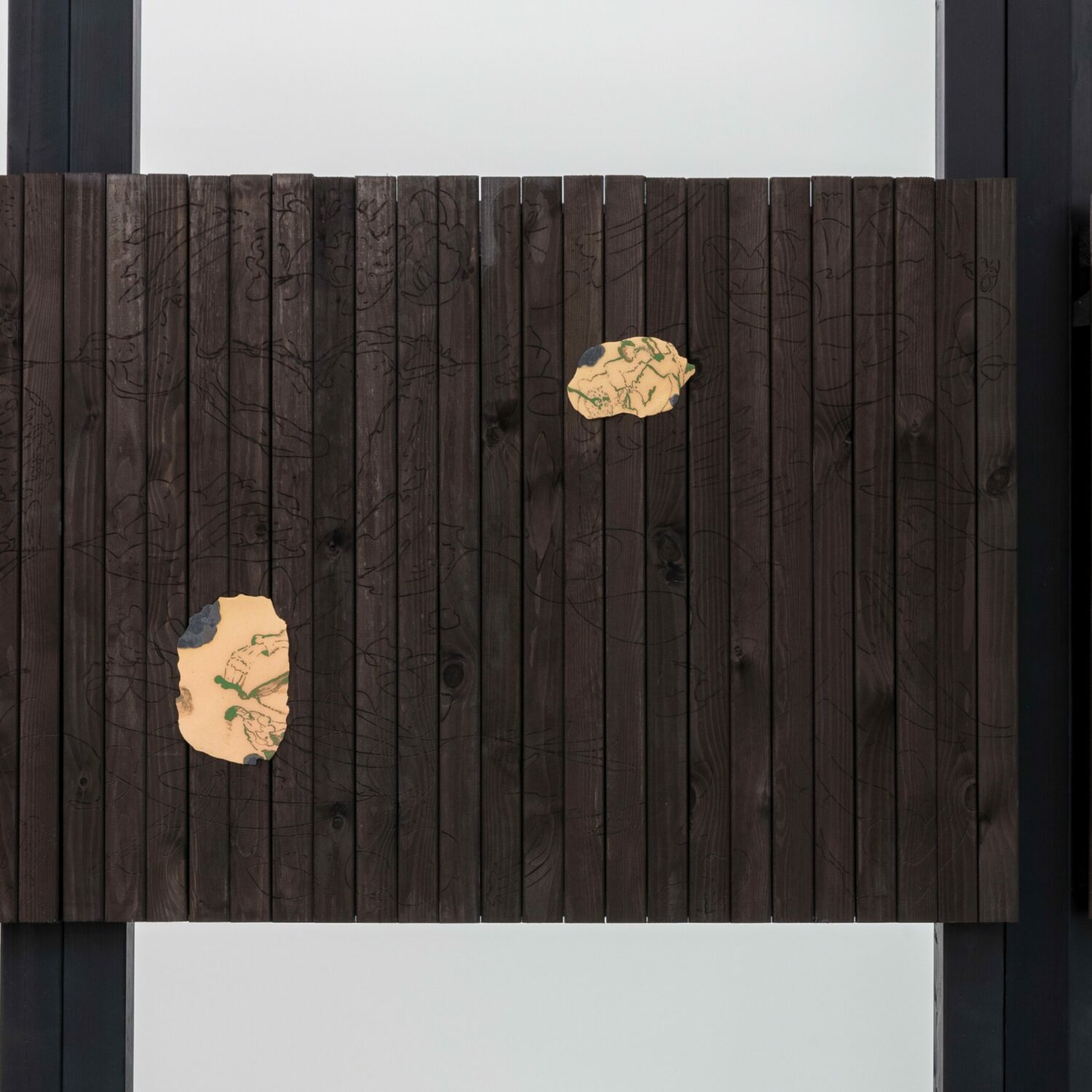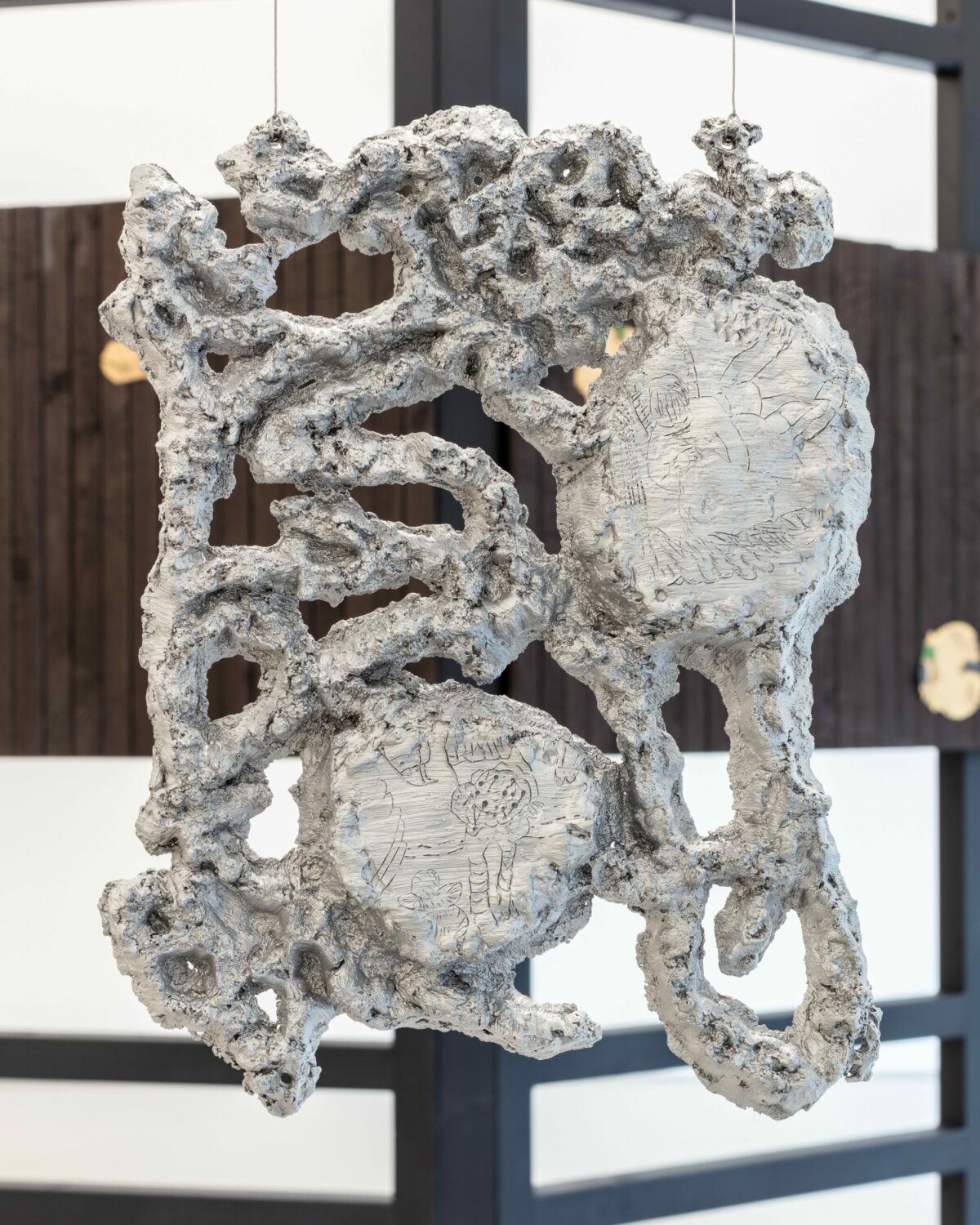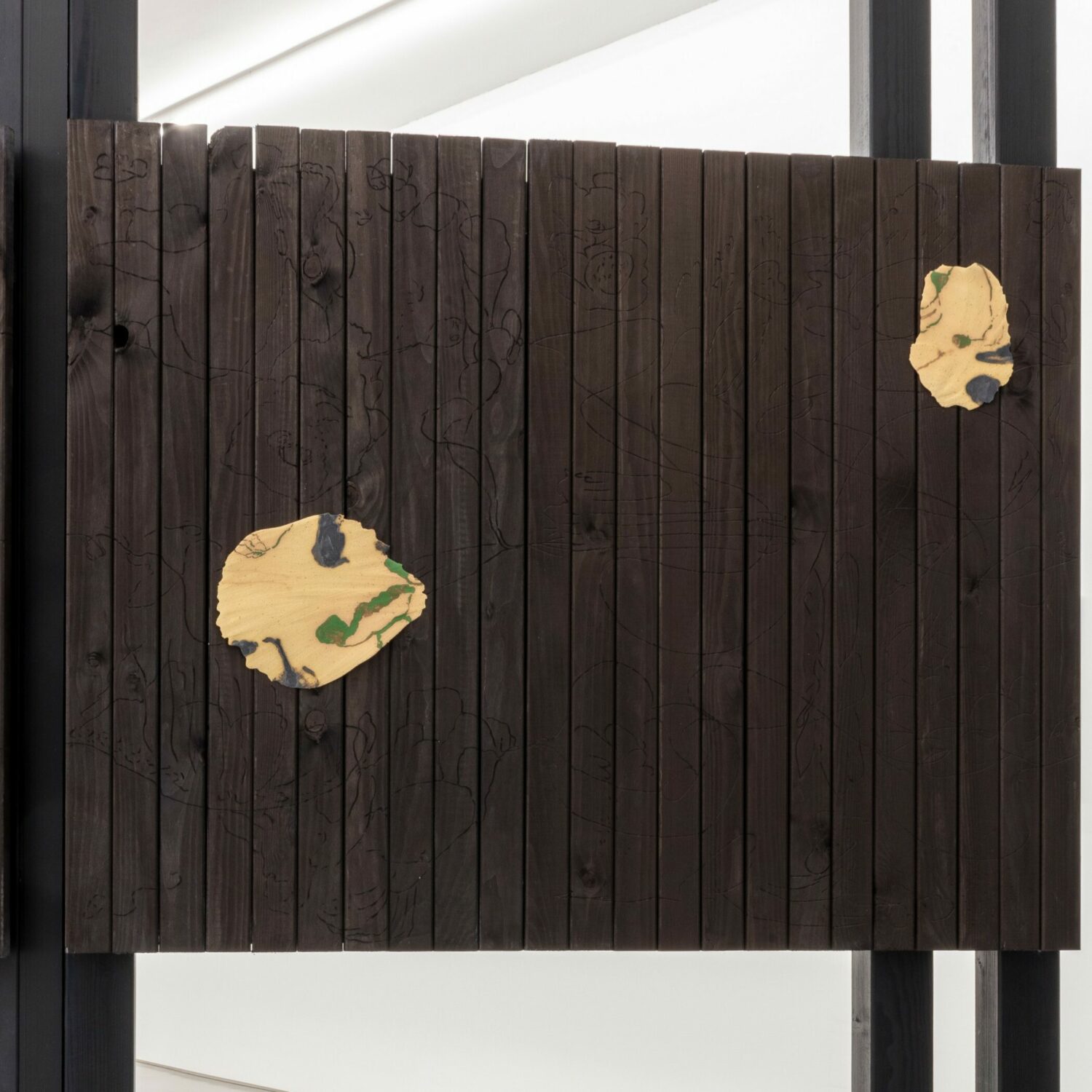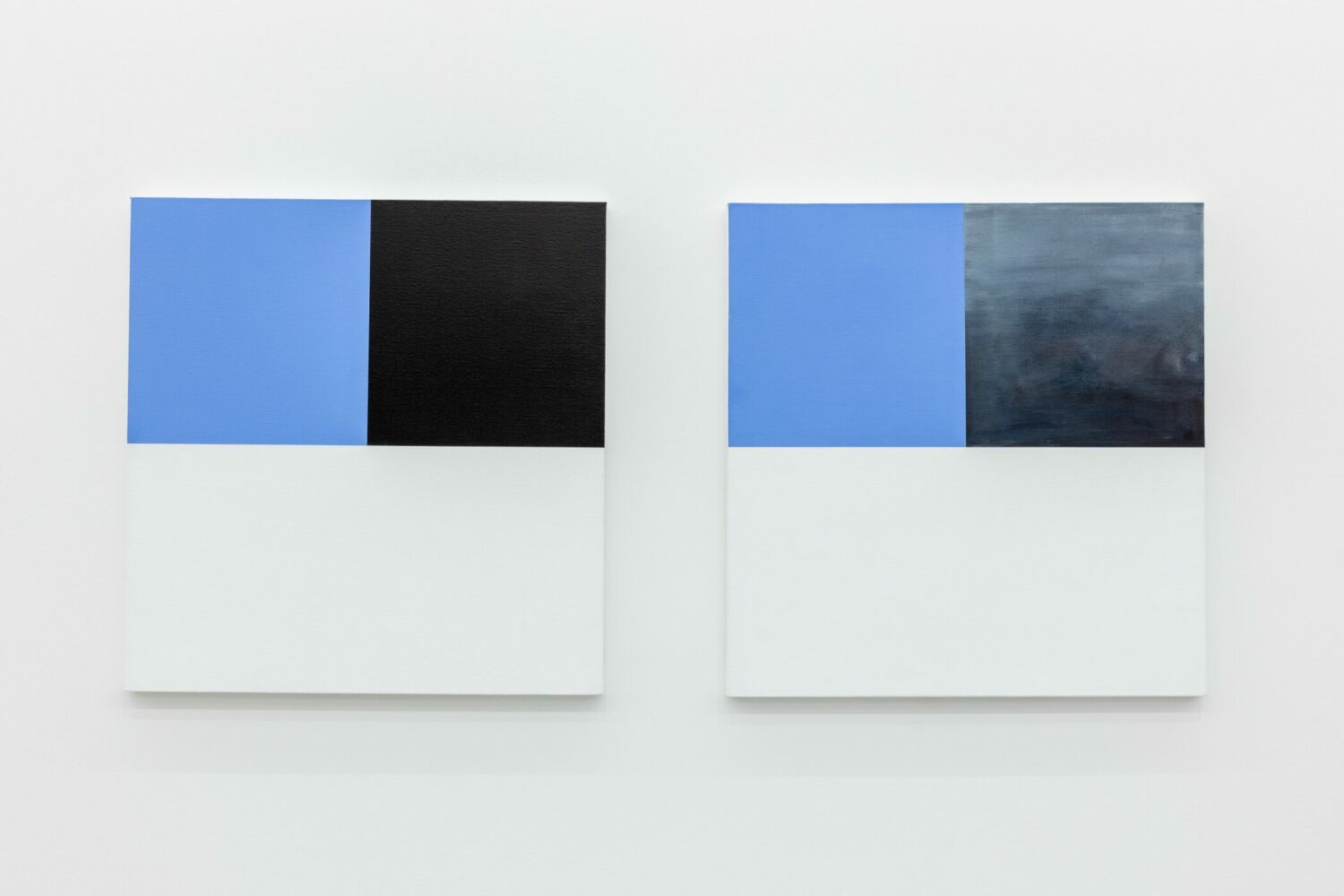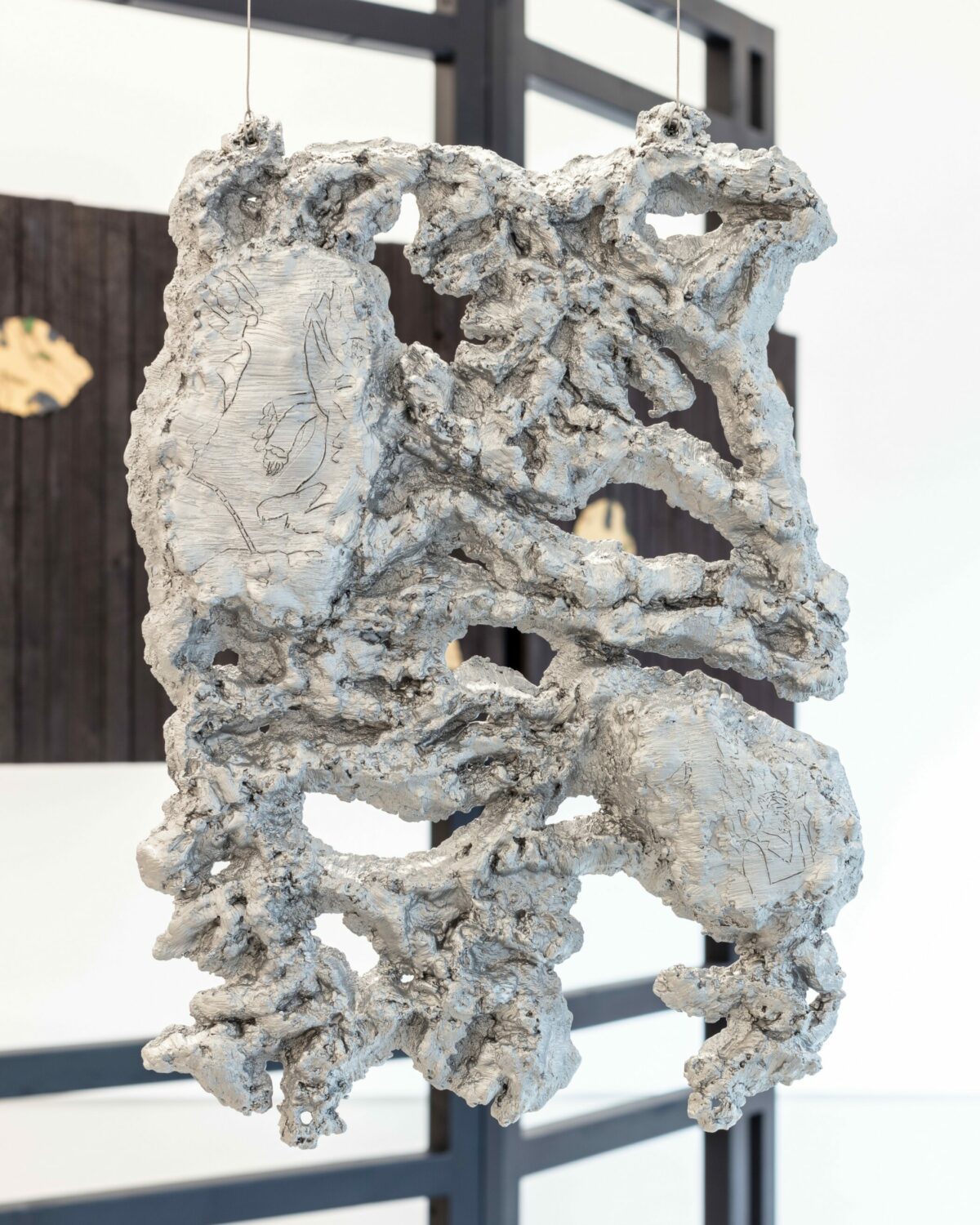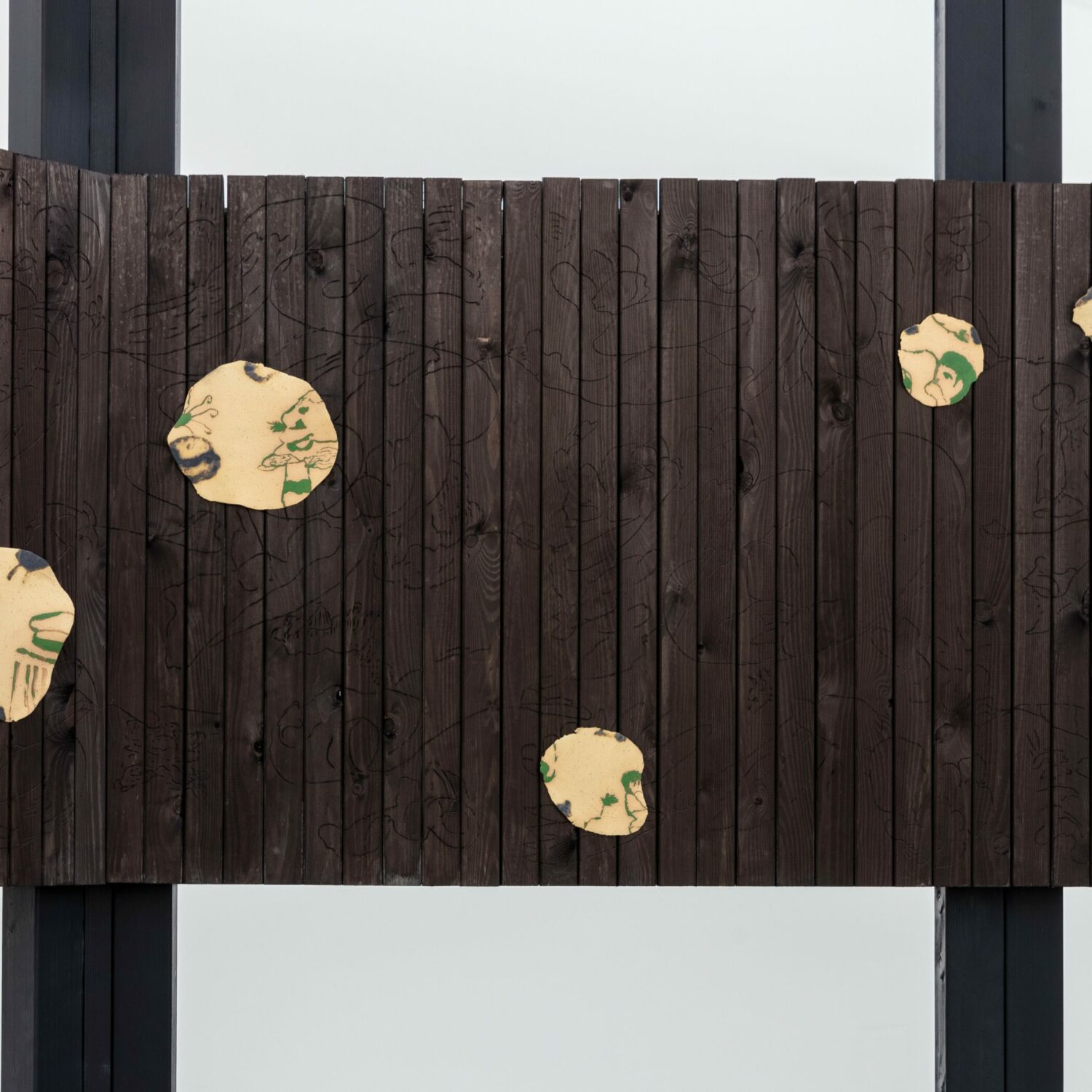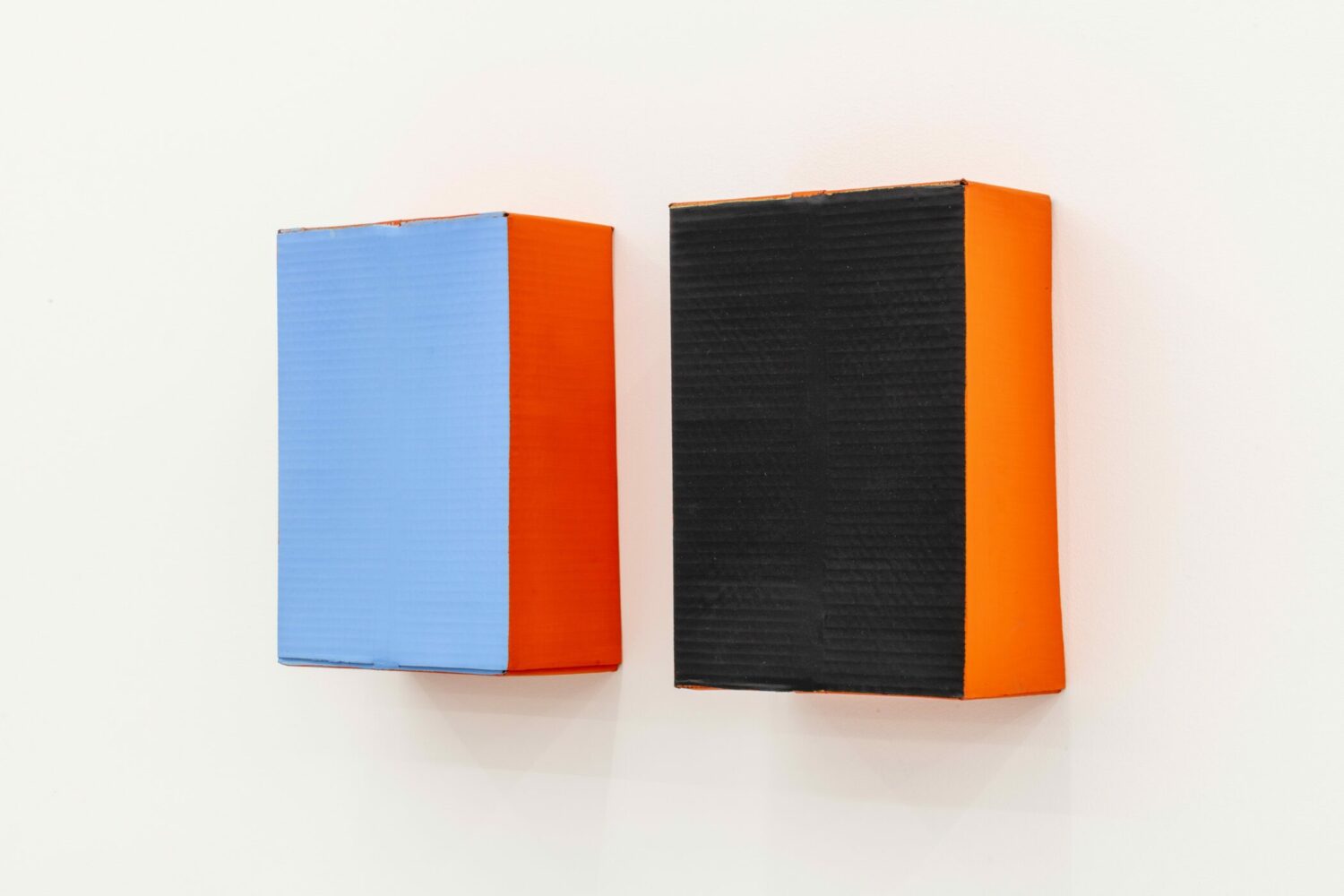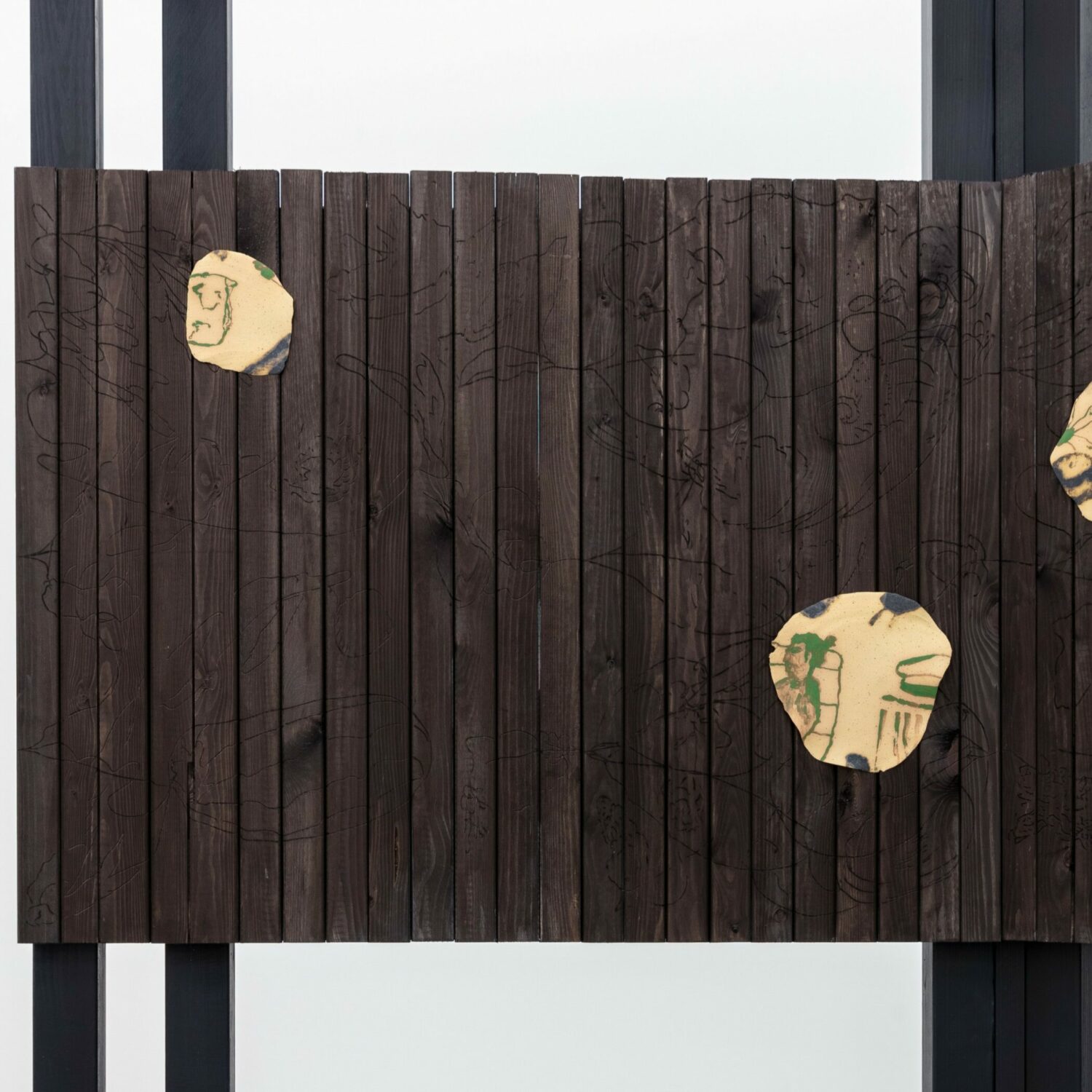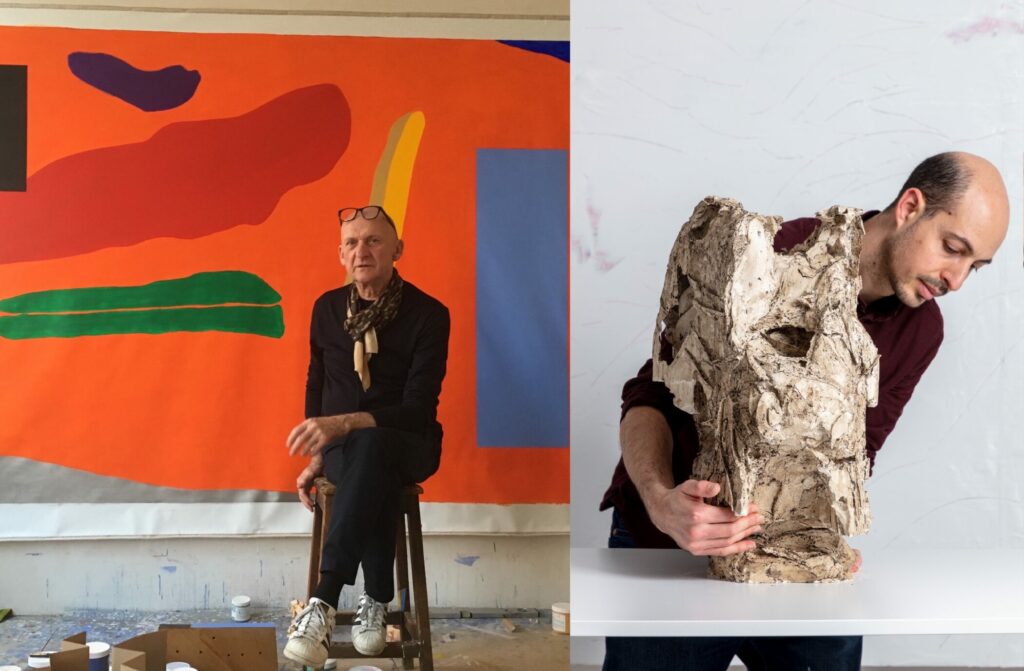A master of colour in his own right, albeit through more organic optics, Kritzman is interested in exploring how pigments affect space, an idea that he explores to exhaustion. It is common practice that the artist will experiment with dozens of hues within the same concept – for instance, with his signature monochromes made of a thick layer of oil paint – changing nuances between one composition and the next. It is in these small twists that convey each work with a richness of details, that his artistic strength lies. For instance, in + Days + Nights, he exhibits a dark engraved wooden structure – a sort of wall that is familiar to his practice – that creates a long see-through division occupying a generous portion of the gallery. Over its surface, in no particular order, the artist attached unique ceramic pieces, preciously made by hand. To make them, first, he squished the clay between his palms, flattening their surfaces as much as possible; he then painted over them using metals like copper and iron; when fired, the drawings emerged with various colours. The imagery in these ceramic paintings is analogous to archaeological fragments, as the motifs are seemingly incomplete: the top of bodies missing the bottom half, a stair that ends abruptly and so on.
This wooden wall gathers within Kritzman’s constant juggling between the monumental and the delicate, a signature modus operandi that charges each of his pieces with at least two layers of appreciation. For their scale alone, his works can be spotted from a fairly long distance, yet they require intimacy to be fully tasted. His other piece on show is a long line formed by ten double-sided aluminium reliefs – though the artist has a clear vision of what is their front and what is their backside. Their fronts display images that span from watercolours he created while in Greece a few summers ago on the occasion of a residency and nod to kisses and other moments of intimacy, especially among lovers.
Spread over the walls of the gallery, as if embracing the sculptures that occupy the centre of the space, are works from three different series by Philippe Van Snick, each of which is embedded in his decimal system. They further convey another paradigm of his practice, namely the duality between day and night – something that is also alluded to in the title of the show. Night is represented by the colour black whereas day is portrayed with light blue – that is, until he abandons conceptualism in favour of a figurative depiction of different luminosities, as in the series Allies (2012), which consists of acrylic diptychs of square-ish canvases. Each pair’s bottom half is painted with one same colour from his decimal system, whereas the top of the painting is further divided into two squares, one standing for the day and the other for the night (or vice-versa). Through a seemingly random – which is to say purely artistic – set of choices, some of the nights are depicted as monochromes while others are figurative representations; the same goes for the days. The Empire of Light compositions by his fellow Belgian René Magritte inevitably come to mind.
Another series of diptychs employs an even more minimal language to align his dual and decimal systems. Dix Jours / Dix Nuits (1985) takes cardboard boxes as its structure, using the front side to illustrate nights and days with black and blue paint respectively. The side edges are each painted with a colour from his decimal system, and though he created ten pairs, as their title suggests, we exhibit but three colours: green, orange and violet.
The last work in the exhibition belongs to one of Van Snick’s many series called Symmetric –Asymmetric, developed in the late 1980s. This piece uses square-shaped wood panels as the background to rectangular shapes in vinyl and paint in blue, black and another one of his decimal colours. The rule of proportions between each half of the diptych was explained by the artist in Dynamic Project, “on the left panel: below left and right day and night symmetrical + two coloured planes of varied size, spread randomly across the plane (in a random composition). On the right panel: day and night asymmetrically spread randomly across the plane + two coloured planes of varied size, spread randomly across the plane (in a random composition)[1]”. Here, as throughout his practice, it is remarkable to observe the broad aesthetic results that Van Snick achieves while adhering to a fairly strict conceptual framework.
Curated by Maria do Carmo M. P. de Pontes.
+ Days + Nights will run from 11th April – 8th June 2025, at Elizabeth Xi Bauer’s Exmouth Market location, open Wednesday through to Saturday, 12 – 6 pm or by appointment.
This exhibition will be part of London Gallery Weekend 2025 edition (6th – 8th June). As part of this, Elizabeth Xi Bauer will present a panel discussion at the Exmouth Market space in June 2025, open to the public.
This exhibition has been conceived courtesy of the Philippe Van Snick Estate and Martins & Montero.
[1] Excerpt from Philippe Van Snick’s Dynamic Project, 2010. Editors: Liesbeth Decan. Hilde Van Gelder. Marie-Pascale Gildemyn
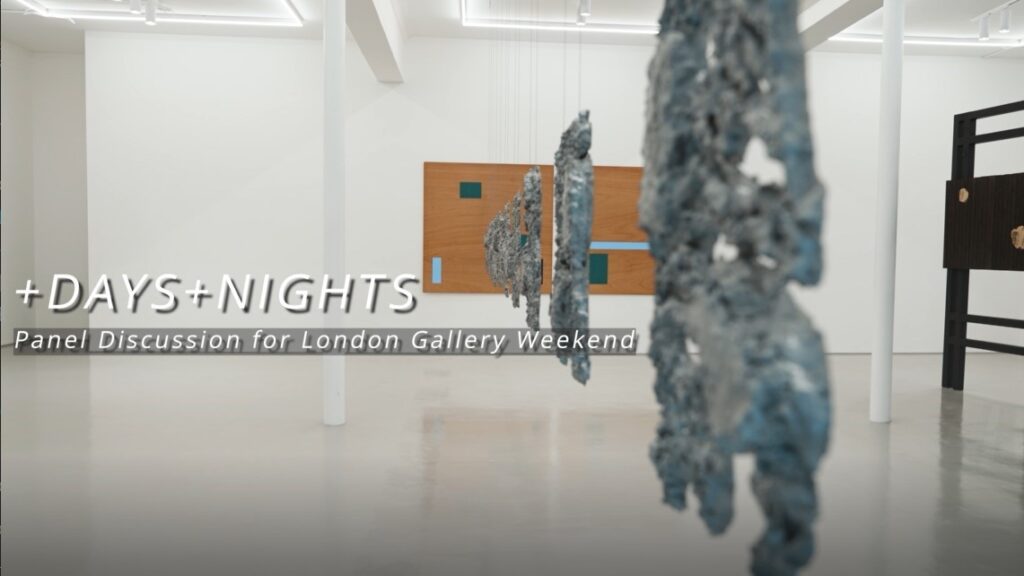
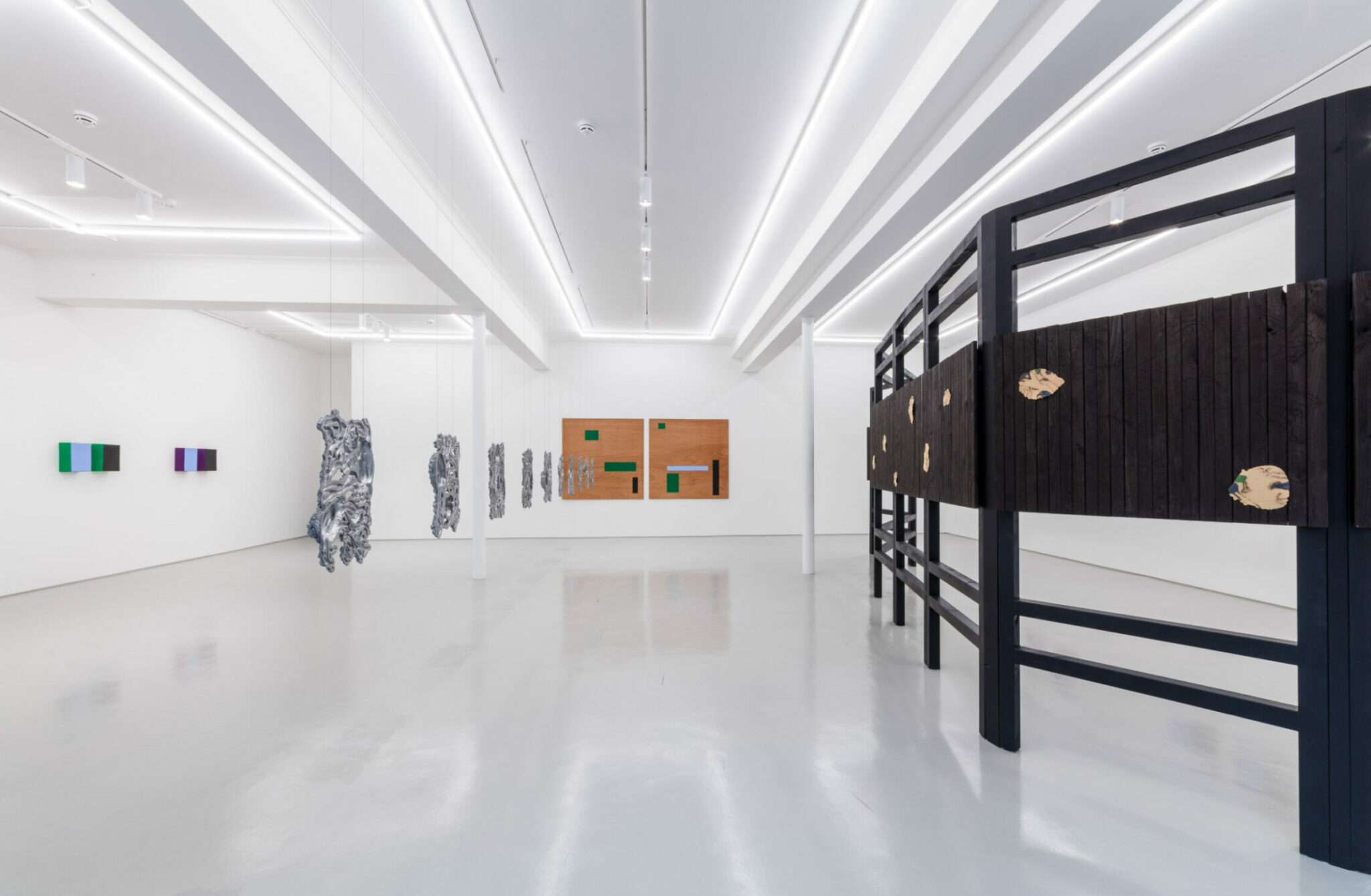
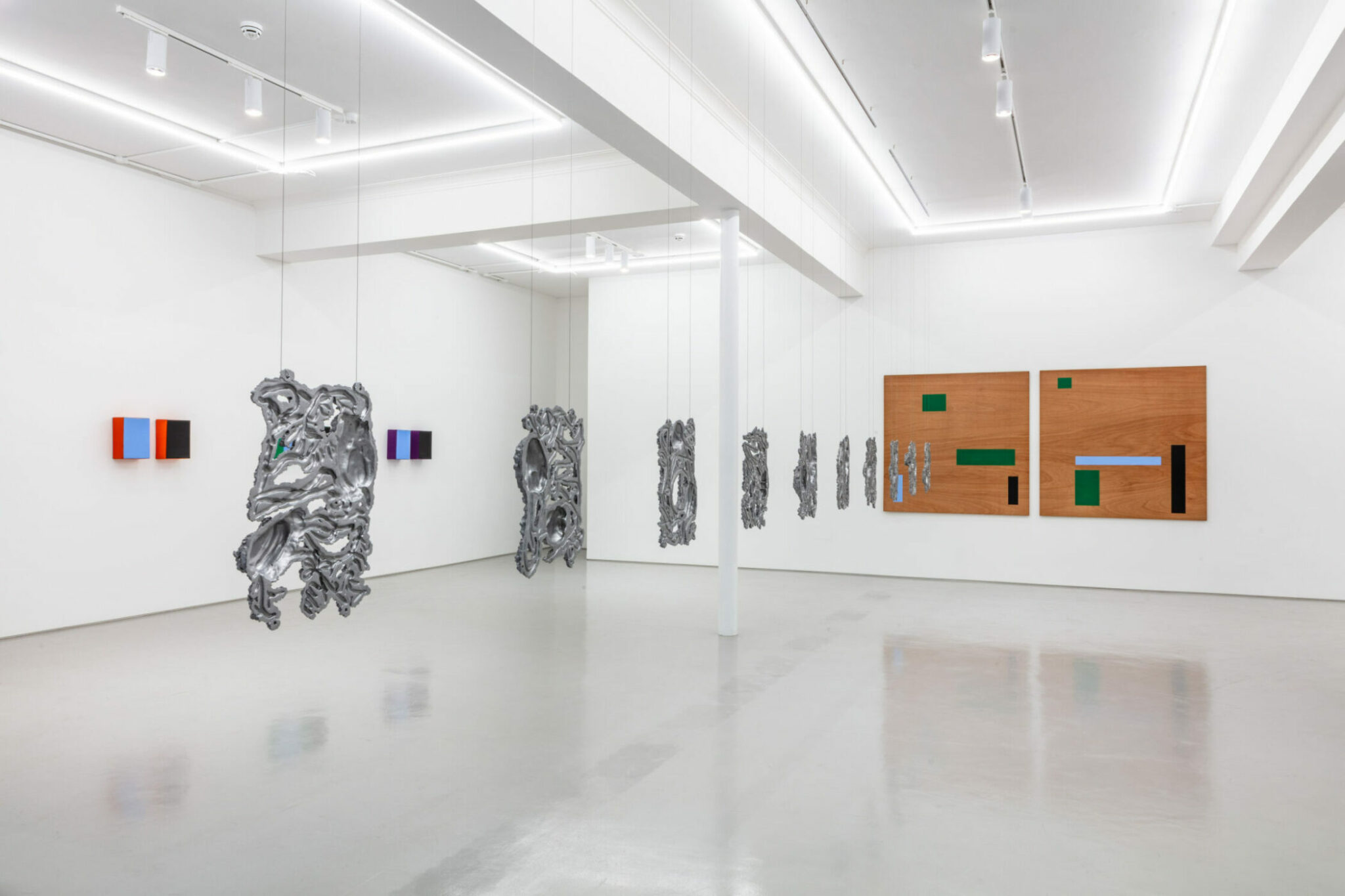

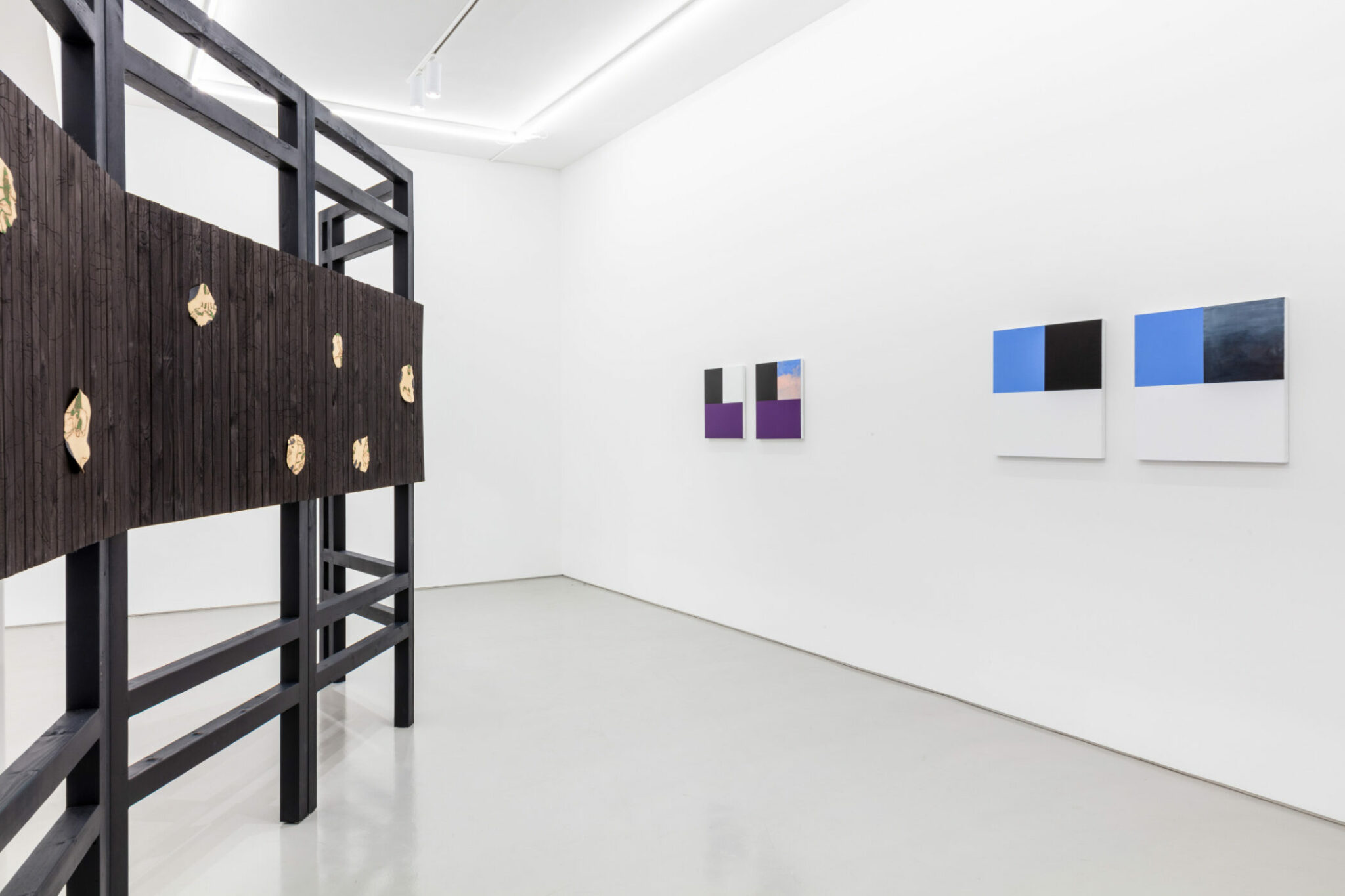
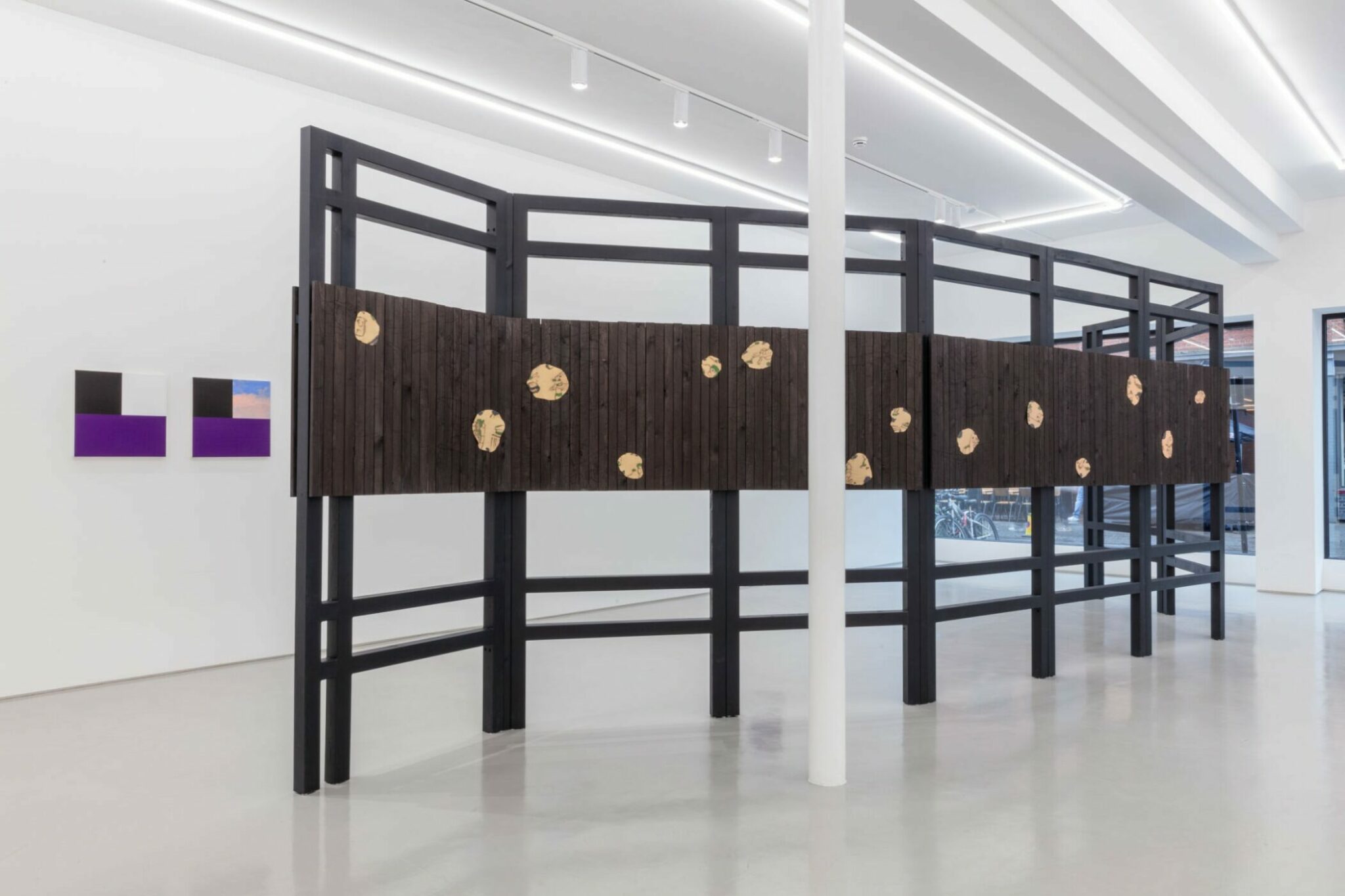
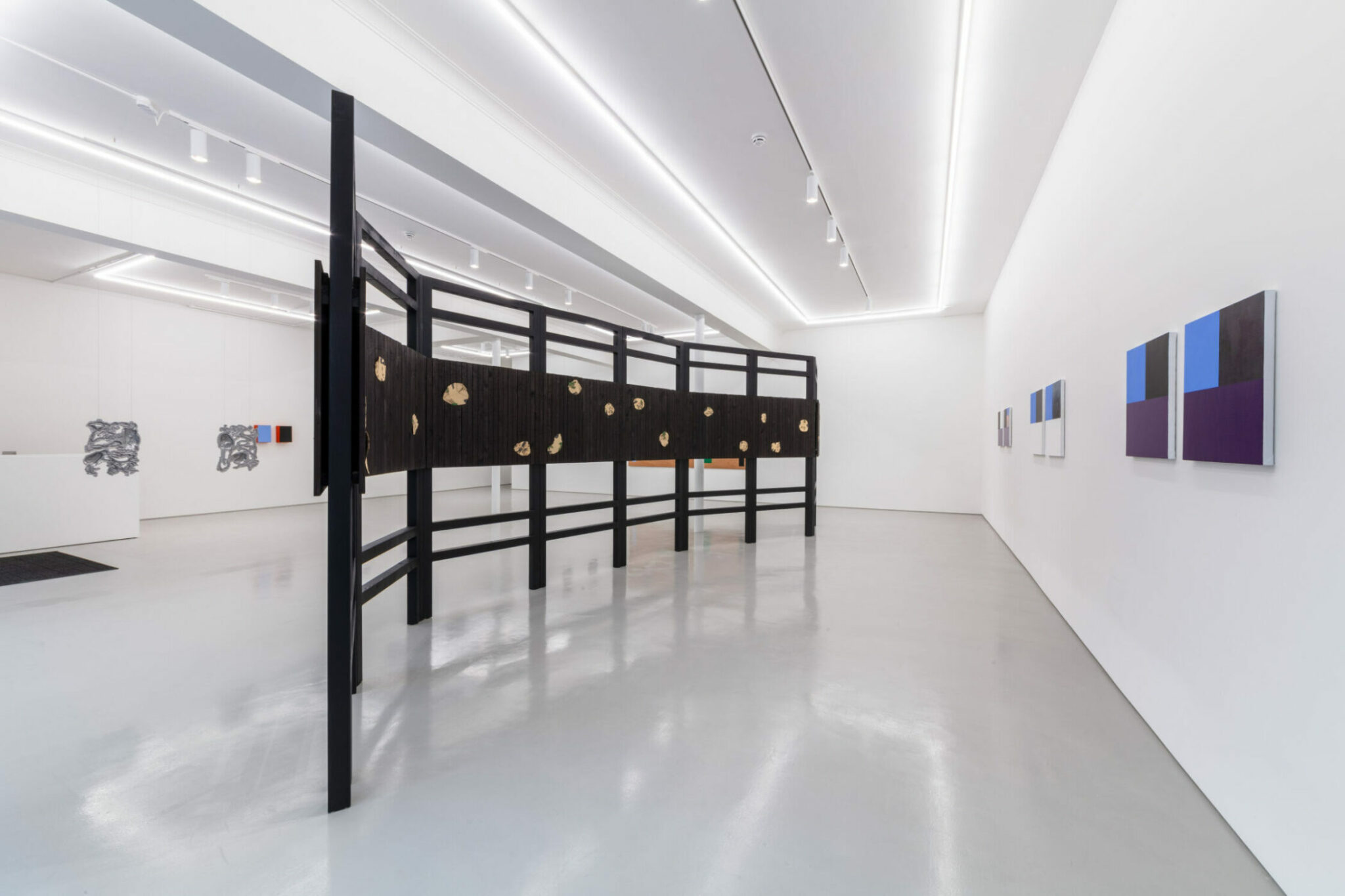
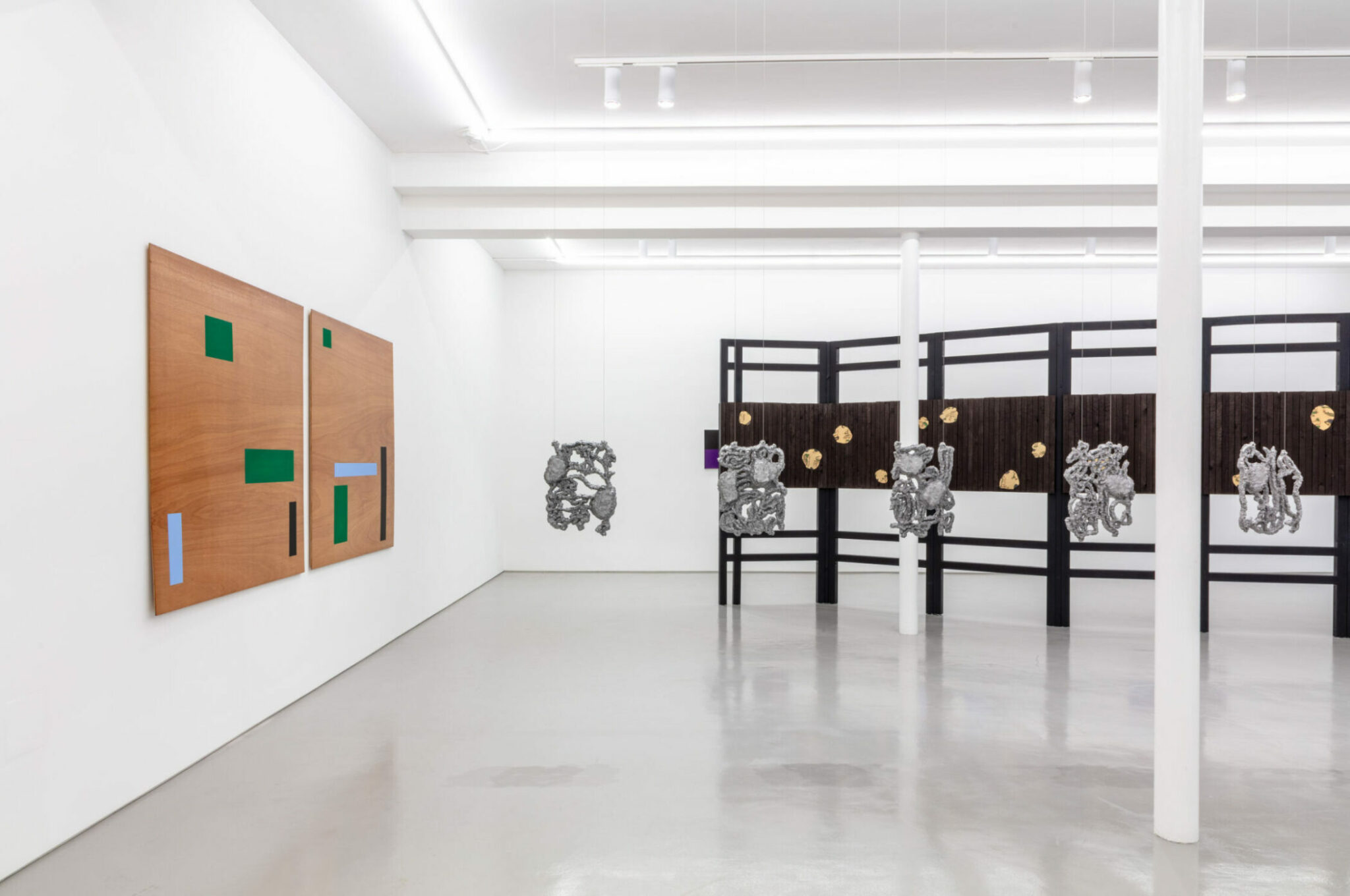
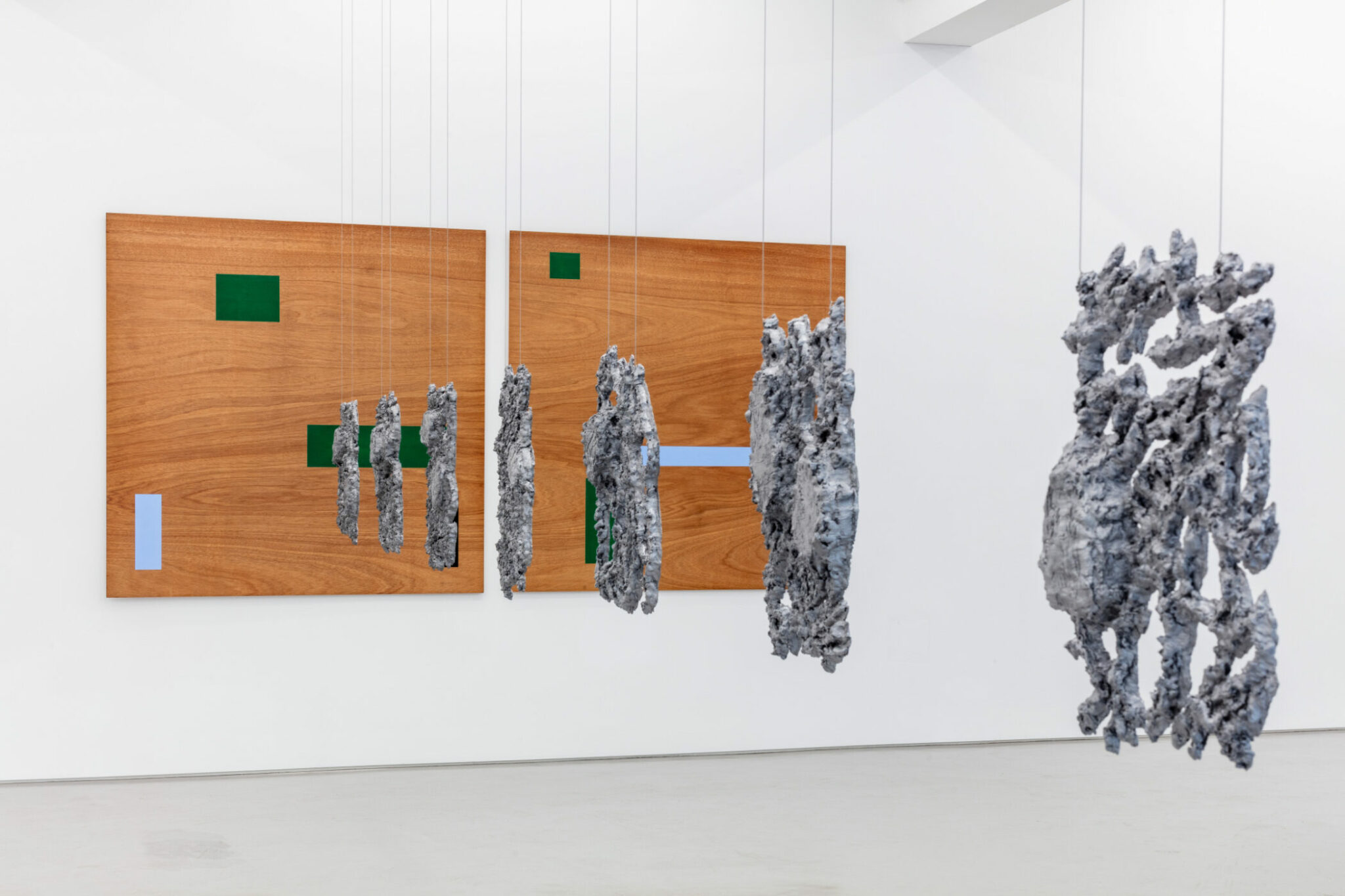
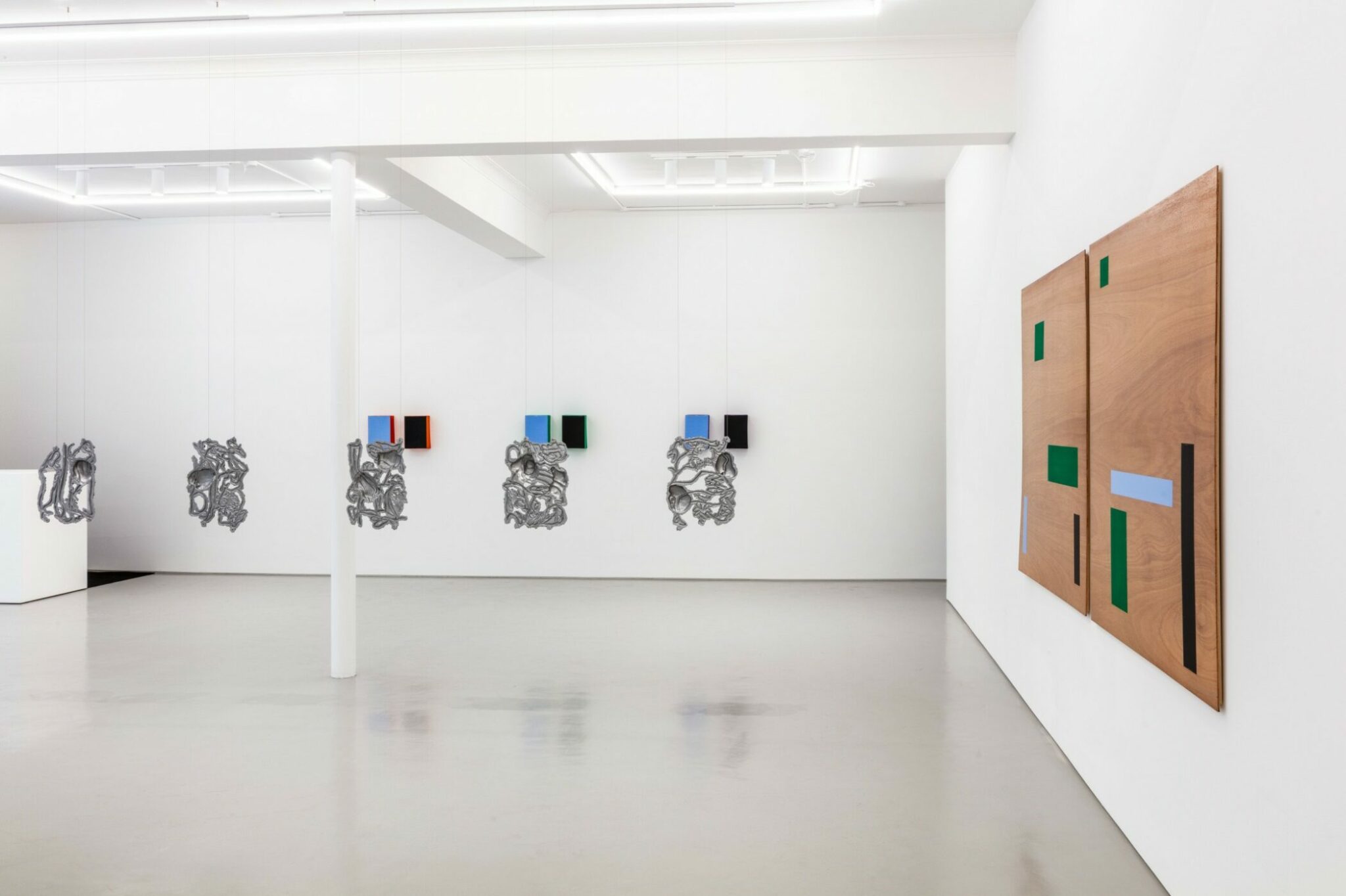
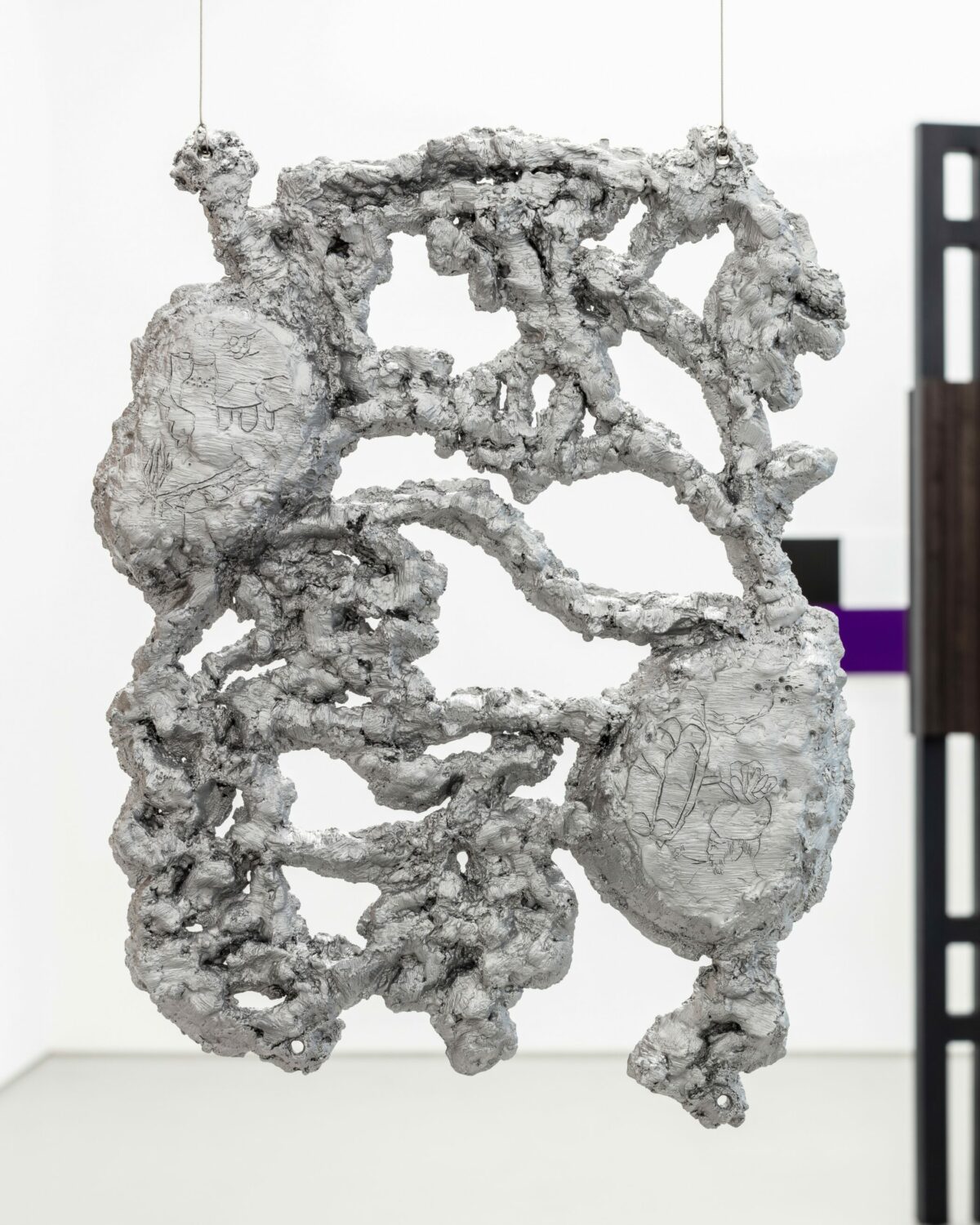
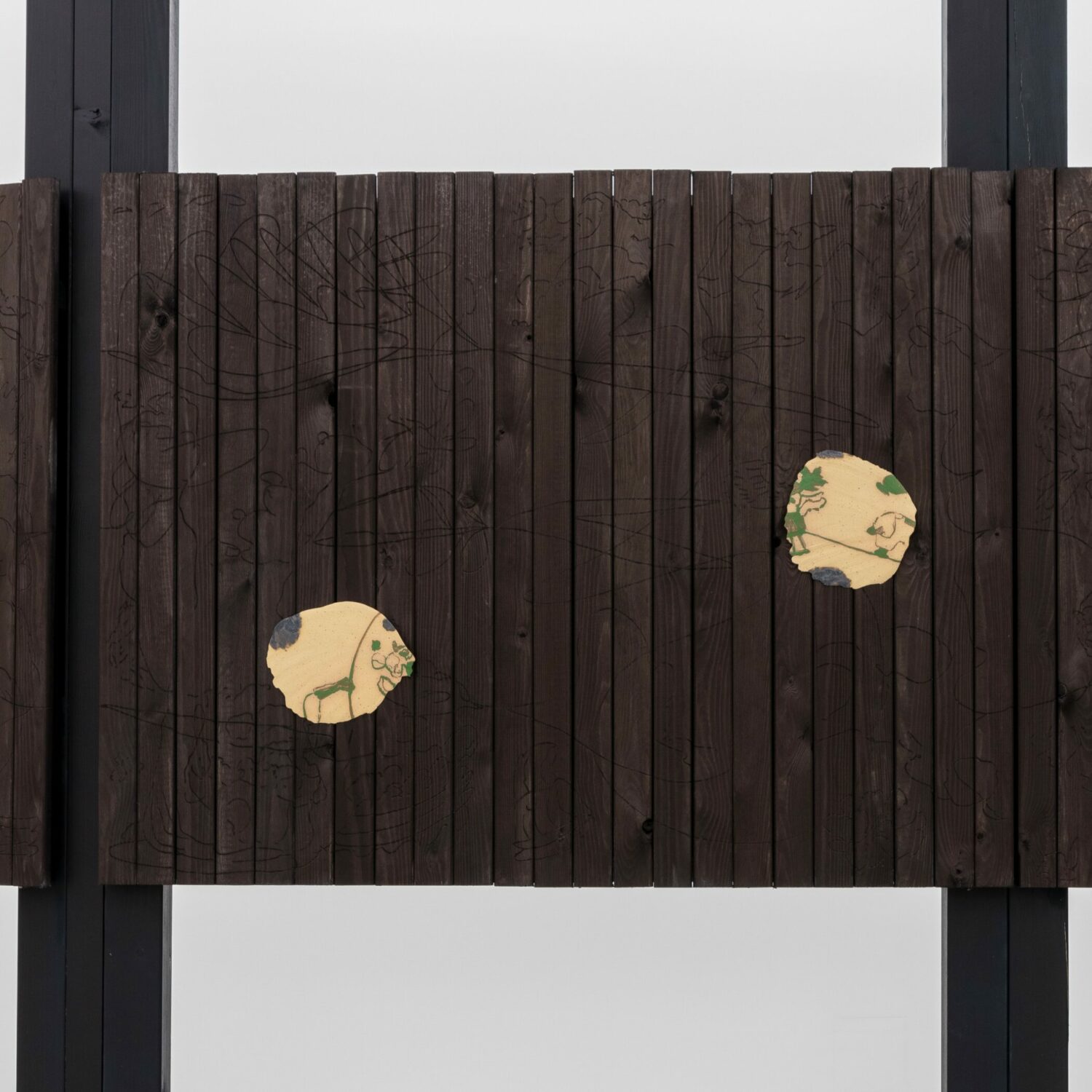

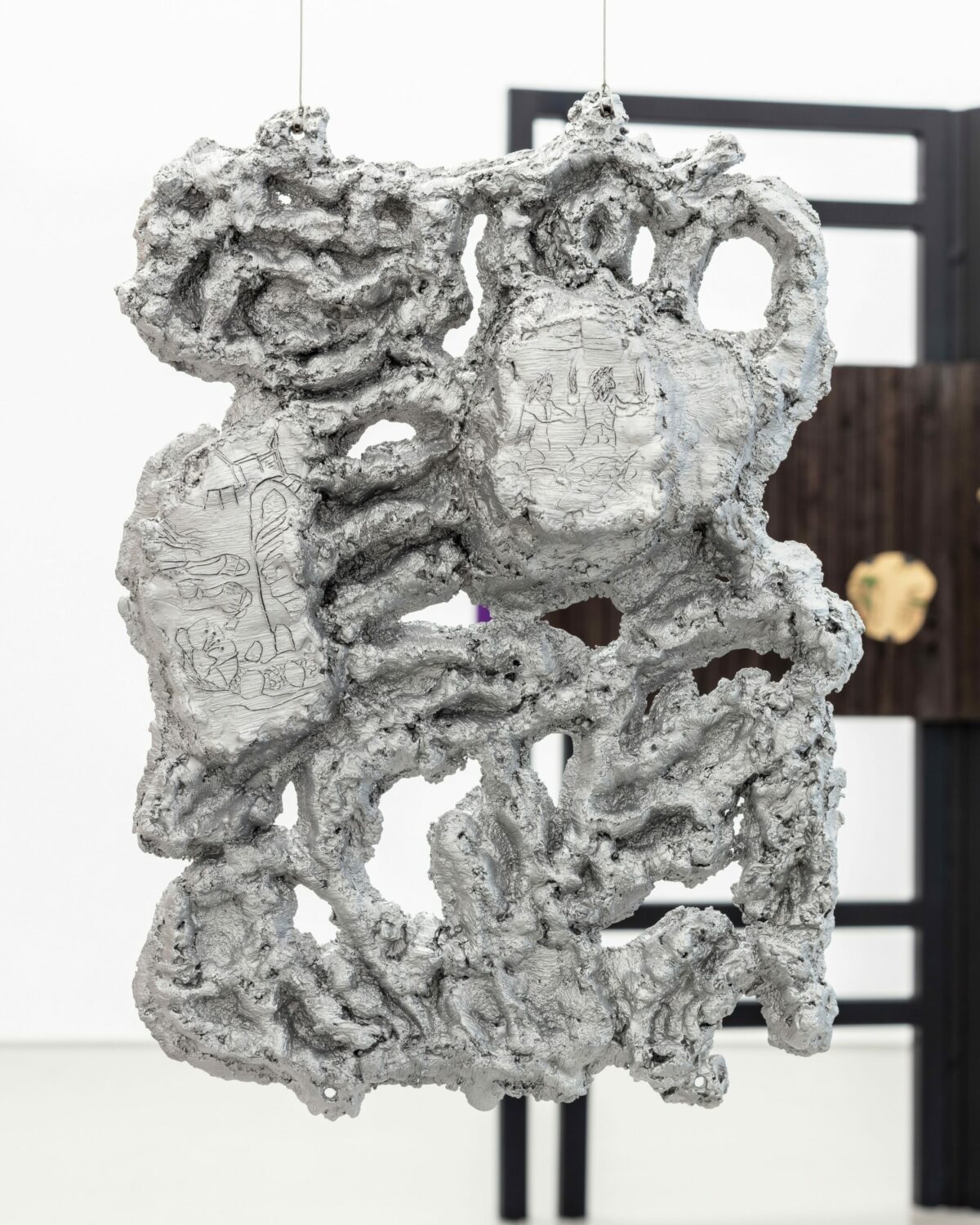
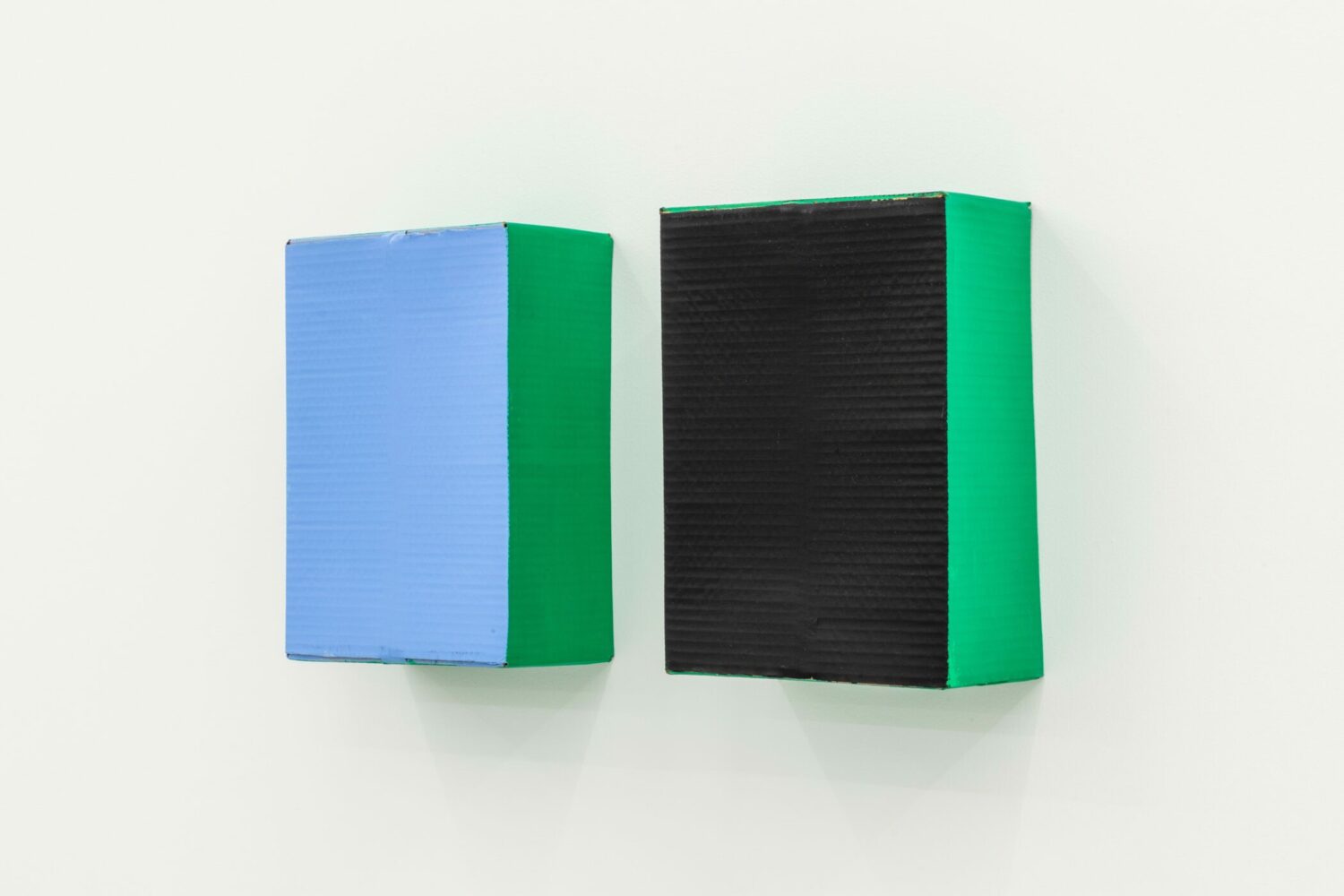



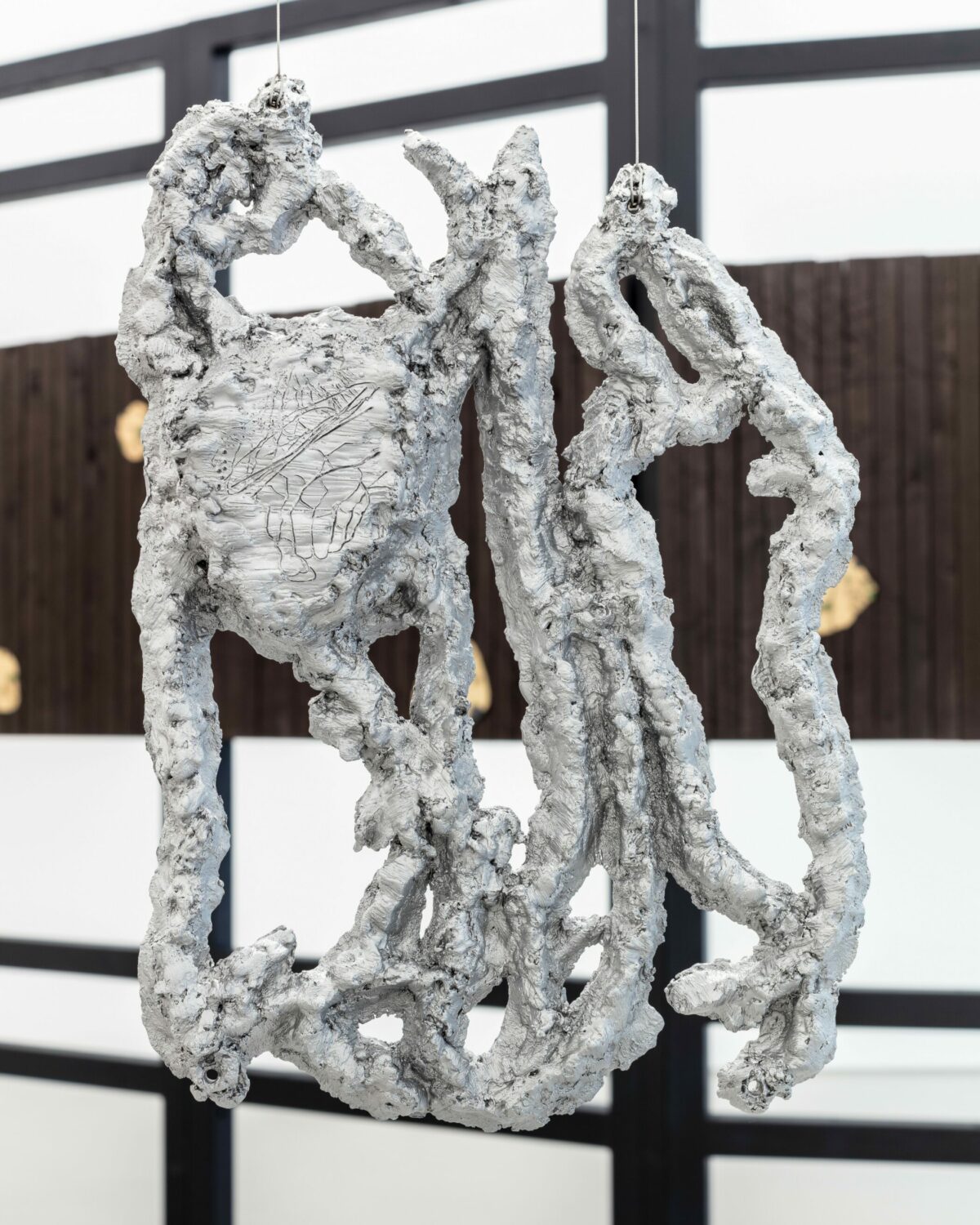
![Symmetrische – Asymmetrische reeks op paneel (groen) / [Symmetric - Asymmetric series on panel (green)]](https://elizabethxibauer.com/wp-content/uploads/2025/04/Days-Nights-51461-1500x1165.jpg)
